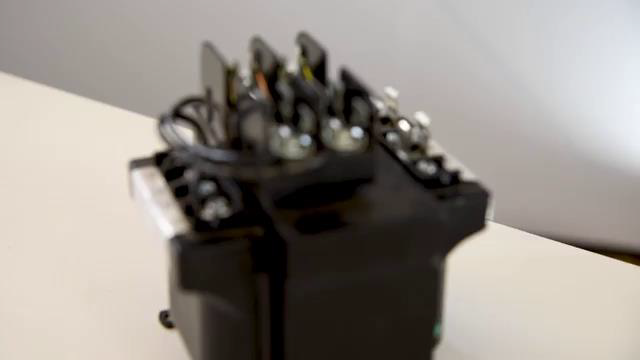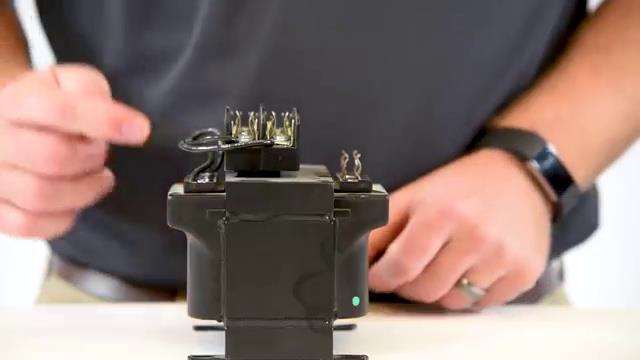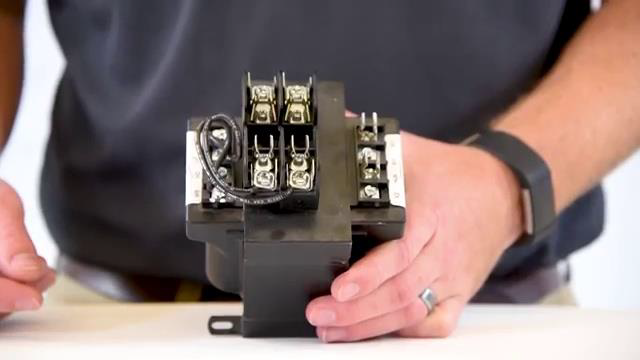Transformer_Basics_What_is_a_Transformer.pdf
Transformers: Better understand what they are used for and how they work
Transformer Uses:
- Transformers are used for AC power applications only
- They are intended to alter the voltage level of AC power either UP or DOWN
- Many AC components require unique levels of AC voltage, Transformers are used in these scenarios
- Are homes are supplied with 120VAC, but the lines above or under are homes carry much higher levels. This is where a transformer is very commonly used.
Hardware:
- Transformers consist of three main parts: Primary winding, Secondary Winding and Iron Core
- Primary winding's acts on the secondary winding giving you a certain voltage
- The number of winding's on both the primary and secondary will impact the output voltage
Keep in mind that transformer are one of the most commonly used electrical devices we see today. They can be used to altar the state of AC power both UP and DOWN.
Transcript:
[0m:4s] Hi I'm Josh Bloom, welcome to another video in the RSP Supply education series. Today we're going to be talking about transformers. What are they, how do they work, and why are they so important in so many of our electrical systems? To better understand how transformers work, let's first talk about a rule that we know to be true in regards to energy. Energy can neither be created or destroyed. However, energy can be changed or transformed in some way and that's where transformers come into play. Let's use water as an example to better illustrate this transfer of energy that we're actually talking about. In one case, we might have water shooting out at incredibly high pressure, say 100 gallons. This takes a certain amount of energy to accomplish. Let's also say we have another example where we're shooting out the same amount of water, 100 gallons, but instead of shooting it out at a high pressure through a small stream of water that it is coming out in a large stream slowly. Well, this takes the same amount of energy, but in both cases, they're just doing this in different ways. So, transformers work much in the same way. They take one type of voltage and change it to another type of voltage. However, they don't use any more or less energy to do this. So when we increase the voltage we're not increasing the energy and conversely when we decrease the voltage we're not decreasing the amount of energy that's being used. So, how is it that we change the voltage and we don't see any change in energy.
[1m:26s] We do this because of Ohm's law which states that voltage equals amperage times resistance, meaning that when we increase the voltage, the amperage decreases. or when we decrease the voltage the amperage will increase, thus using the same amount of energy but giving us different voltage levels. So, why is it that we need to change the voltage in our electrical systems? To better illustrate this let's talk about something that we see on a daily basis: the power lines that run above our homes and places of business.
[1m:56s] Most of the power lines that we see every day are energized with up to tens of thousands of volts at any given time.
[2m:2s] Why is this? Again, because of ohms law, we know that the more voltage we have the less current or average that we are running at.
[2m:10s] We also know that wire size is dictated by the amount of current that we run through that wire. So, the more amperage or current that we have, the larger the wire that we need to run.
[2m:22s] Well, if we are running at a lower voltage on our power lines we're going to need to use much larger wire, which can be very expensive and impractical.
[2m:30s] So, our power lines are typically run at a much higher voltage so that we can decrease the average and use a much smaller wire size.
[2m:39s] Because these power lines are running at such a high voltage, it can be very dangerous for anyone in the area or to run that type of voltage into our homes. This is where transformers come into play. We need something that can take that high voltage and change it to a lower voltage
[2m:55s] that's more manageable and can be safely used in our homes. So, a transformer can take any type of AC voltage and convert it to a different AC voltage, either up or down. So again, in the case of our homes, we need that voltage to be at a more safe level for us to use. So, we use those Transformers on those power lines to decrease the level of the voltage. In industrial applications, it is very common to see 480 volts AC, for instance, transformed down to 120 volts AC so that we can use it in our control panels, for control circuits, and operating at a much more safe voltage. Another common application we might see transformers being used is in your home sprinkling system. The valves that operate an automatic sprinkling system typically operate at 24 Volt AC.
[3m:40s] Well, our homes don't generate 24 volts AC. So, our sprinkling systems often have some sort of transformer that converts 120 volts, which is what we get out of the outlets in our home, down to 24 Volt AC and allows us to operate those valves on our automatic sprinkling system. As I mentioned before, transformers can also increase voltage and there are many different scenarios in industrial and commercial and residential applications where we actually increase voltage to meet those types of scenarios. So, now that we know where and why we use transformers, let's talk about how transformers actually work. They take advantage of a principle known as electromagnetic induction. Transformers use a few different components to accomplish this task. First, it uses what is known as a primary winding, or the primary. And when a certain voltage is applied to this primary, it creates an electromagnet, which then creates an EMF, or an electromagnetic field. There is also a secondary winding that is connected to the primary winding through an iron core, which you can see right here.


[4m:49s] the EMF is created acts upon the secondary windings giving us a certain voltage that we can use. The number of windings in our secondary in comparison to our primary will actually dictate the output voltage of our transformer. So, for example, if we have twice as many windings in our secondary as we do in our primary, we get twice the voltage. If our secondary has half the number of windings as our primary windings, we get half the voltage. In most cases, the primary winding is intended to be our input voltage, and the secondary winding is intended to be the output voltage. There are some transformers where we can reverse this voltage either way. It is common for most transformers to allow for multiple input voltages as well as multiple output voltages, just depending on how we wire the transformer.

[5m:43s] And lastly, keep in mind that a transformer has absolutely no impact on the frequency, or the Hertz of our AC signal. It only impacts the voltage and the current.
[5m:53s] For a full line of transformers or thousands of other products, please go to our website. For more information or other educational videos, go to RSPSupply.com, the Internet's top source for industrial hardware. Also, don't forget: like and subscribe.




